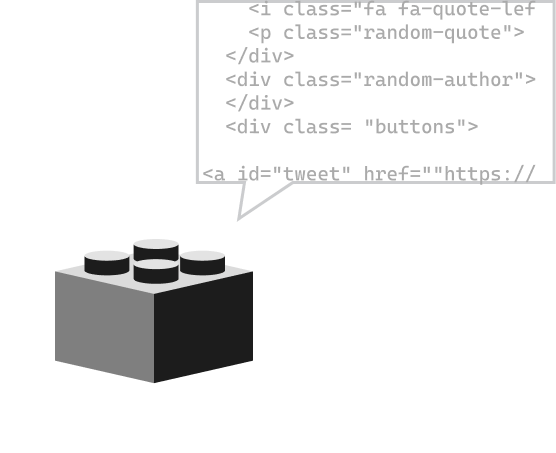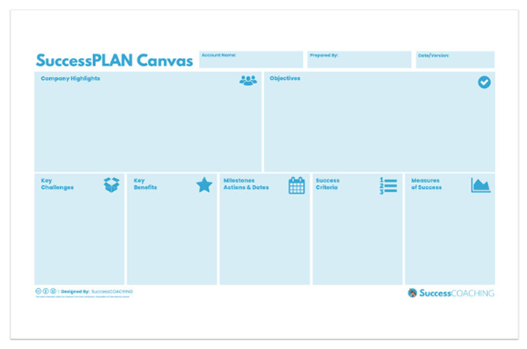Project Plan Vs. Success Plan Vs. Adoption Plan
Jonathan Lee
ISSI Customer Success Practice Lead

Customer Success Practice Blog Series #4
Having the opportunity to review and audit many company's Customer Success practices and capabilities, I realized that many organizations are confused about Project, Success, and Adoption plans.
Therefore, I will focus this blog on the differences between Project Plan, Success Plan, and Adoption Plan, what exactly they are, why they are different, and when you apply them. The organization needs to understand the difference between them so that they are using the right "Plan" at the right place.
Let's first examine each of the plans on its own.
What is a Project Plan?
A project plan[1], according to the Project Management Body of Knowledge (PMBOK), is: "a formal, approved document used to guide both project execution and project control. The primary uses of the project plan are to document planning assumptions and decisions, facilitate communication among project stakeholders, and document approved scope, cost, and schedule baselines. A project plan may be summarized or detailed.
Project Management is a long-established practice; the person managing the Project is called a "Project Manager" (NOT Customer Success Manager). The project manager creates the project management plan following input from the project team and key project stakeholders. The plan should be agreed upon and approved by at least the project team and its key stakeholders.
What is a Success Plan?
While the Project Plan is used to ensure the smooth implementation of a project, a Success Plan is used to document the customer intended business outcomes of the subscription, how the outcomes can be reached, the timeline, resources required, etc.
As defined by SuccessCoaching [2], the Success Plan is a blueprint for documenting the customer success journey. The plan should highlight the customer's goals, pain points, and expectations, as well as measures of success.
It should contain 4 main sections
- Where is the customer now (this is the baseline)
- Where does the customer want to go (this is the intended outcome, preferably defined via SMART KPIs)
- When does the customer want to reach their goals (This state the timeline)
- How does the customer want to get there (This captures the activities required)
The specific format of a Success Plan varies from organization to organization; Cisco Systems, Google, etc., have their specific format to capture various information. As an example, I will highlight a vendor-neutral template from SuccessCoaching [3].
It is a single-page plan that captures a wide range of information; the most critical among them are Objectives, challenges, milestones, actions & dates, and success criteria.

What is an Adoption Plan?
The adoption plan is technically part of the Success Plan (sometimes people use it interchangeably with Success Plan or Customer Success Plan).
An Adoption Plan (or Technology Adoption Plan) is a plan to increase user adoption of new technology. This involves training employees, encouraging a digital-friendly culture, and minimizing the disruption caused by new technology [4]. It serves as a roadmap for guiding the customer toward full product or service adoption.
They Sound Almost The Same
The Adoption plan has a more specific purpose: to define the specific "Adoption actions or activities" to be taken.
Adoption is effectively managing the change from how the customer organization used to be before to how the customer's organization needs to be after the implementation [5]. Hence, the Adoption Plan can perhaps be better explained as a "Change Management" Plan.
Like Success Plan, Adoption Plan is a comprehensive topic and will not be covered in detail in this blog. Instead, I would like to highlight a framework with 3 common adoption activities categories as described by Rick Adams in his book - Practical Customer Success Management: A Best Practice Framework for Rapid Generation of Customer Success [6].
- Communication activities
- Training activities
- Support activities
A pattern I have seen across many organizations is associating the adoption activities with just "training." It is the most obvious activity and critical but by no means the only activity. Communication should be the first activity to occur. It should be used at the start to inform everyone about the upcoming change and help to prepare them for the change ahead of time. Communication content includes what the change is, why the change is needed, who is affected, when, etc. Various channels can be used, such as - emails, intranet posts, posters, face-to-face meetings, town hall meetings, virtual meetings, etc.
Training is easily understood, but there are various ways of execution - informal, formal, workshop style, customized content based on persona, etc.
Equally important are the "Support activities," which help sustain and reinforce the changes post-implementation and training. Examples of these activities include FAQ, on-demand eLearning module, video tutorial, help desk, mentoring, the appointment of a Change champion, etc.
Why are they different and when do you use which one?
Each plan is designed and created for its specific purposes. Mapping them on a timeline scale of the LAER model provides a better perspective on how they fit together

Just like a Project Plan is used to ensure the smooth implementation of a project, a Customer Success Plan (CSP) (AKA Adoption plan or Success Plan) is used to document the customer intended business outcomes of their new service and the related adoption activities. The CSP should capture the current baseline, the intended outcomes, the timeline, and an adoption plan to support the usage of the new service that leads to the realization of the outcomes. The adoption plan could include activities such as "knowledge transfer," use case workshop, communication plan, etc.
The Customer Success Plan is becoming an integral part of the project implementation (especially subscription-based); Cloud vendors such as Google are now requiring their Managed Service Partners to have a Customer Success Plan as part of their post-migration excellence process.
The table below further clarifies the differences and applications of the various plans.
| Purpose | Content | The person executing the plan | When | |
|---|---|---|---|---|
| Project Plan | To guide project execution & control | Project schedule based on time, scope & cost | Project Manager | Land to onboard phase |
| Success Plan | To document the intended outcomes and guide the activities to achieve the outcomes | Success blueprint based on - baseline, business outcomes, KPI, high-level activities, milestones, etc | Customer Success Manager | Onboard to Adopt to Expand phase |
| Adoption Plan | To document the detailed activities needed to support the outcomes | Change management plan based on communication, training, and support activities | Customer Success Manager, OR a more specialized role of "Adoption Specialist." | Adopt & Expand phase |
Summary
In summary, the project plan is used during the Land phase of the LAER model. Once the Project is completed, the project plan ends and the project manager has completed the task. The Customer Success Manager then takes over and uses the Success Plan to document and guide the customer through the rest of the Lifecycle phase - Adopt, Expand, and Renew. Within the Success Plan, a more detailed Adoption Plan can contain the specific activities/actions required to drive the Adoption. Depending on the scope, this would be owned by an "Adoption Specialist". (Note that while the Customer Success Manager is mapped to manage specific accounts, Adoption specialists focus more on the specific adoption project and are usually more technical subject matter experts. While the Customer Success Manager performs more of a management role, Adoption Specialists are the ones implementing the work, such as training).
I see more IT vendors, such as Google, requesting "Success Plan" and "Adoption" activities in their accreditation programs. Many of their Partners struggle to provide the right plan, resulting in undue delay in their accreditation progress and ineffective Customer Success execution.
To learn more about creating relevant Success and Adoption Plans, refer to our Customer Success enablement workshop - https://issi-inc.com/customer-success-best-practice/ or contact us via email at sales@issi-inc.com
Jonathan WM Lee is the Customer Success Practice Lead. He holds the following certifications - Prosci Certified Change Management, Cisco Customer Success Manager, SuccessCoaching CCSM Level 1 & 2, Microsoft Services Adoption Specialist and has extensive experience of over 100 engagements in training, consulting, and auditing of Customer Success programs, processes, and tools. He co-authors the Cisco Advanced Customer Experience Specialization Checklist and Juniper Networks Business Model Transformation Blueprint/Playbook. He has previously spoken in the ISSI-TSIA webinar on "Identifying Strengths & Gaps of your CS Practice." [7]
References
- Project Plan Definition - Wikipedia
- Success Plan definition - SuccessCoaching
- How a Single-page Success Plan produced Big Customer Value - SuccessCoaching
- What Is A Technology Adoption Strategy & How To Spot A Good One? - Digital Adoption
- Adoption is the successful management of change - Page 115,Practical Customer Success Management - A best practice framework for rapid generation of Customer Success - Rick Adams
- Step 5 - Determine Communications, Training, and Support Requirements - Page 143,Practical Customer Success Management - A best practice framework for rapid generation of Customer Success - Rick Adams
- ISSI-TSIA webinar on "Identifying Strengths & Gaps of your CS Practice."
Additional Articles
Cloud management platforms: a core component in growing your managed services business
Amarnath Gutta, Senior Consultant, ISSICloud Management Platforms: A Core Component in Growing Your Managed Services Business By Amarnath Gutta, Senior Consultant, ISSI In our work with partners through workshops,
Is now the right time for cloud service solution providers to adopt a customer success approach?
Jonathan Lee, ISSI Customer Success Practice LeadIs now the right time for cloud service solution providers to adopt a Customer Success approach? By Jonathan Lee – ISSI Customer Success Practice Lead
Building blocks of a customer success practice
Jonathan Lee, ISSI Customer Success Practice LeadBuilding Blocks of a Customer Success Practice By Jonathan Lee – ISSI Customer Success Practice Lead Customer Success Practice Blog Series #3 As mentioned in
- 08 JUL 2024
Unlocking Growth Potential: Managed Security Services for Partners
Victor Vleeschower, ISSI Senior ConsultantIn an era when digitalization is the norm across industries, the importance of robust cybersecurity measures cannot be underestimated. As businesses increasingly...
11 APR 2024Getting started on a cloud partner transformation plan
David Pool, ISSI Senior ConsultantGetting Started on a Cloud Partner Transformation Plan By David Pool – ISSI Senior Consultant A big challenge that established partners face when deciding to
28 MAR 2023How to differentiate your cloud MSP and cloud services company
Barry Turner, ISSI Head of Global Marketing & Senior ConsultantHow to Differentiate Your Cloud MSP and Cloud Services Company By Barry Turner – ISSI Head of Global Marketing & Senior Consultant Why differentiate? The
